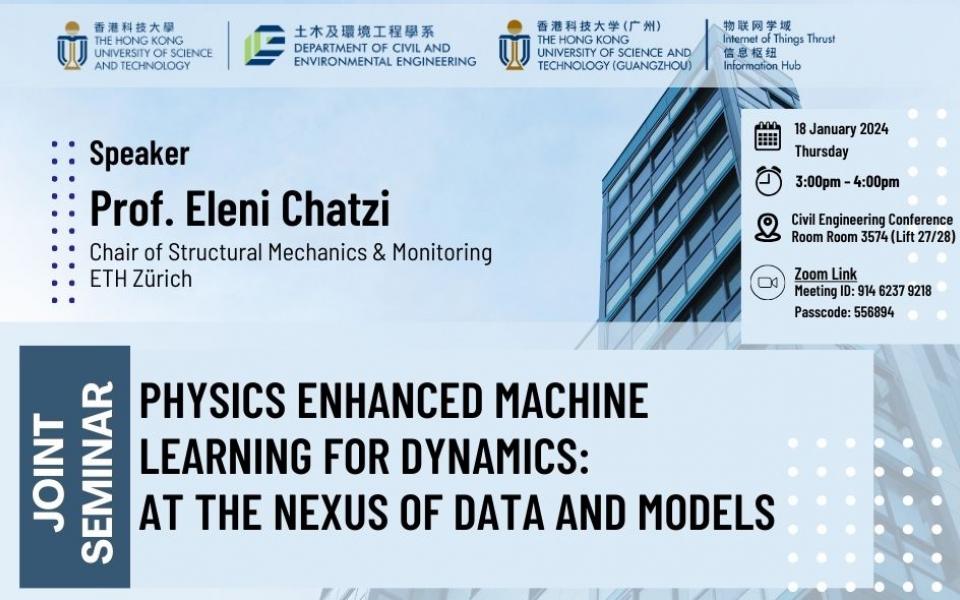Civil Engineering Departmental Seminar - Physics Enhanced Machine Learning for dynamics: at the nexus of data and models
Supporting the below United Nations Sustainable Development Goals:支持以下聯合國可持續發展目標:支持以下联合国可持续发展目标:
Physics Enhanced Machine Learning for dynamics: at the nexus of data and models
TModern engineering structures form complex - often interconnected - assemblies that operate under highly varying loads and adverse environments. To ensure a resource-efficient, safe and resilient operation of such systems, it is imperative to understand their performance as-is; a task which can be effectuated through Structural Health Monitoring (SHM). This talk elaborates on use of monitoring and twinning technologies as a means to recast our engineering approach into one that regards structures and infrastructures as animate cyber-physical systems. We offer a view to fusing data and models via physics-enhanced machine learning schemes for modelling dynamical systems. We discuss the spectrum of such schemes as this unfolds from white to grey to black-box representations, which pose different requirements in terms of availability of physics and data. An optimal balance is sought with the aim to faithfully represent structures across their operational envelop, to reliably predict their performance under future stressors, and to advise on preventive and remedial actions at both the unit and fleet (system) level. We exemplify such a hybrid approach toward establishing closed-loop twin representations on a number of use cases drawing from civil, wind energy and aerospace structures.
